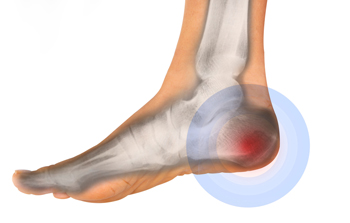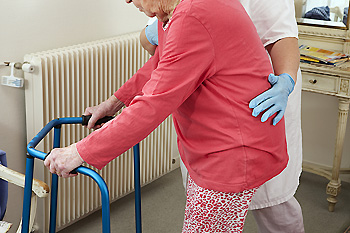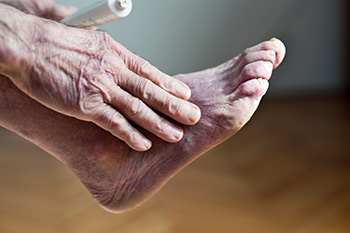
Many people across the country suffer from some kind of heel pain. Commonly, you might experience heel pain because of a condition known as plantar fasciitis. Although there are a multitude of different reasons why you might be experiencing heel pain, performing certain exercises might help alleviate the pain felt. One of the most common exercises is to stretch out your plantar fascia. This can be done from a seated position. Simply put one foot at a time on top of a cold water bottle and slowly roll the foot back and forth over the bottle, being careful and while gently rolling. This exercise can be performed for about one minute on one foot before alternating to the other foot. Additionally, you might try stretching your calves. This can be done by facing a wall and placing the palms of both your hands against the wall. Put one foot in front of you and another behind you. Slowly and repeatedly bend the knee of the leg in front of you as you lean forward with each bend. These are just some of the many different exercises that you might perform to alleviate heel pain. For more information, be sure to contact a chiropodist who can help.
Heel pain is a common problem that can be caused by a variety of injuries, medical conditions, and other factors. If you suffer from heel pain, please consult with one of the chiropodists from The Footcare Centre. Our chiropodists can help you maintain the health of your lower limbs and your mobility.
When it comes to heel pain, the exact location and type of pain are important to note. Some of the conditions that may cause heel pain include:
Plantar fasciitis - An inflammation of the ligament that runs along the bottom of the foot; it causes a stabbing pain under the heel that is at its worst when taking your first few steps after a long rest and while standing on your tiptoes or climbing stairs
Achilles tendonitis - An inflammation of the tendon in the back of the calf; it causes pain in the back of the heel that is at its worst after resting, as well as ankle and calf stiffness, swelling, and tenderness
Bone spurs - Bony lumps on the back of the heel bones that cause sharp pain upon first standing up; the pain becomes dull and achy over time
Heel fractures - A break or crack in the heel bone that causes pain, swelling, and difficulty walking
Retrocalcaneal bursitis - Swelling of the small, fluid-filled sac at the back of the heel bone; it causes pain, swelling, redness, and warmth in the back of the heel
Tarsal tunnel syndrome - Compression of the posterior tibial nerve which causes a pins and needles sensation in the heel, foot, and calf
Your chiropodist will be able to diagnose the underlying cause of your pain and prescribe the right treatments for you. If you have any questions, please feel free to contact our office located in . We offer the newest diagnostic and treatment technologies for all your foot care needs.





